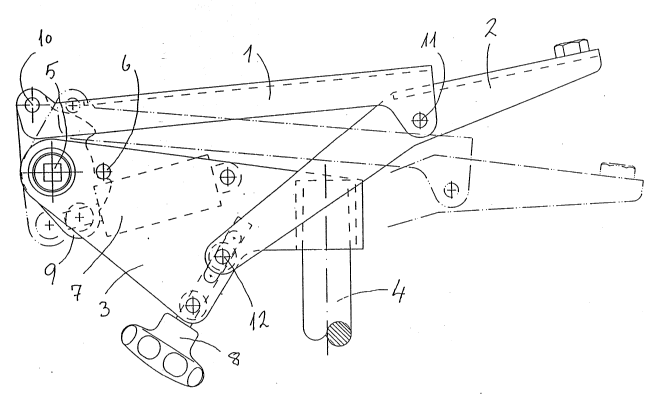Some of the information on this Web page has been provided by external sources. The Government of Canada is not responsible for the accuracy, reliability or currency of the information supplied by external sources. Users wishing to rely upon this information should consult directly with the source of the information. Content provided by external sources is not subject to official languages, privacy and accessibility requirements.
Any discrepancies in the text and image of the Claims and Abstract are due to differing posting times. Text of the Claims and Abstract are posted:
| (12) Patent: | (11) CA 2087094 |
|---|---|
| (54) English Title: | TORSION SPRING AND ADJUSTABLE MOUNTING FOR A CHAIR USING SUCH A SPRING |
| (54) French Title: | RESSORT DE TORSION ET DISPOSITIF DE FIXATION POUR FAUTEUIL UTILISANT CE RESSORT |
| Status: | Deemed expired |
| (51) International Patent Classification (IPC): |
|
|---|---|
| (72) Inventors : |
|
| (73) Owners : |
|
| (71) Applicants : | |
| (74) Agent: | MOFFAT & CO. |
| (74) Associate agent: | |
| (45) Issued: | 1993-12-14 |
| (86) PCT Filing Date: | 1990-08-20 |
| (87) Open to Public Inspection: | 1992-02-21 |
| Examination requested: | 1993-01-11 |
| Availability of licence: | N/A |
| (25) Language of filing: | English |
| Patent Cooperation Treaty (PCT): | Yes |
|---|---|
| (86) PCT Filing Number: | PCT/NO1990/000134 |
| (87) International Publication Number: | WO1992/003072 |
| (85) National Entry: | 1993-01-11 |
| (30) Application Priority Data: | None |
|---|
ABSTRACT
Straight type torsion spring being clamped
together at two ends, which ends being rotatable in
relation to each other against the torsion spring force,
the torsion spring comprising at least four identical
torsion rods abutting laterally along their entire
extension, thereby utilizing the relatively large twisting
angle of the small dimension torsion rods combined with the
total torsion force of the torsion spring rods, each of
which independently being twisted helically when activating
the spring. Adjustable mounting for a chair, preferably an
office chair, comprising the torsion spring of the above
defined type, a seat frame, a back frame and a mounting
bracket, a tilting lever being clamped to a pipe which
other end is clamped to one end of the torsion spring, the
upper end of the lever being articulated to the front
portion of a seat frame, the rear portion of which being
articulated to a back seat frame to which rear end the back
seat is secured, and the forward end of the back seat frame
being articulated to the bracket, the position of which
articulation being adjustable thereby enabling an
adjustment of the back seat frame angle.
Note: Claims are shown in the official language in which they were submitted.
Note: Descriptions are shown in the official language in which they were submitted.

For a clearer understanding of the status of the application/patent presented on this page, the site Disclaimer , as well as the definitions for Patent , Administrative Status , Maintenance Fee and Payment History should be consulted.
| Title | Date |
|---|---|
| Forecasted Issue Date | 1993-12-14 |
| (86) PCT Filing Date | 1990-08-20 |
| (87) PCT Publication Date | 1992-02-21 |
| (85) National Entry | 1993-01-11 |
| Examination Requested | 1993-01-11 |
| (45) Issued | 1993-12-14 |
| Deemed Expired | 2008-08-20 |
There is no abandonment history.
Note: Records showing the ownership history in alphabetical order.
| Current Owners on Record |
|---|
| RING MEKANIKK A.S. |
| Past Owners on Record |
|---|
| LIE, TORE |